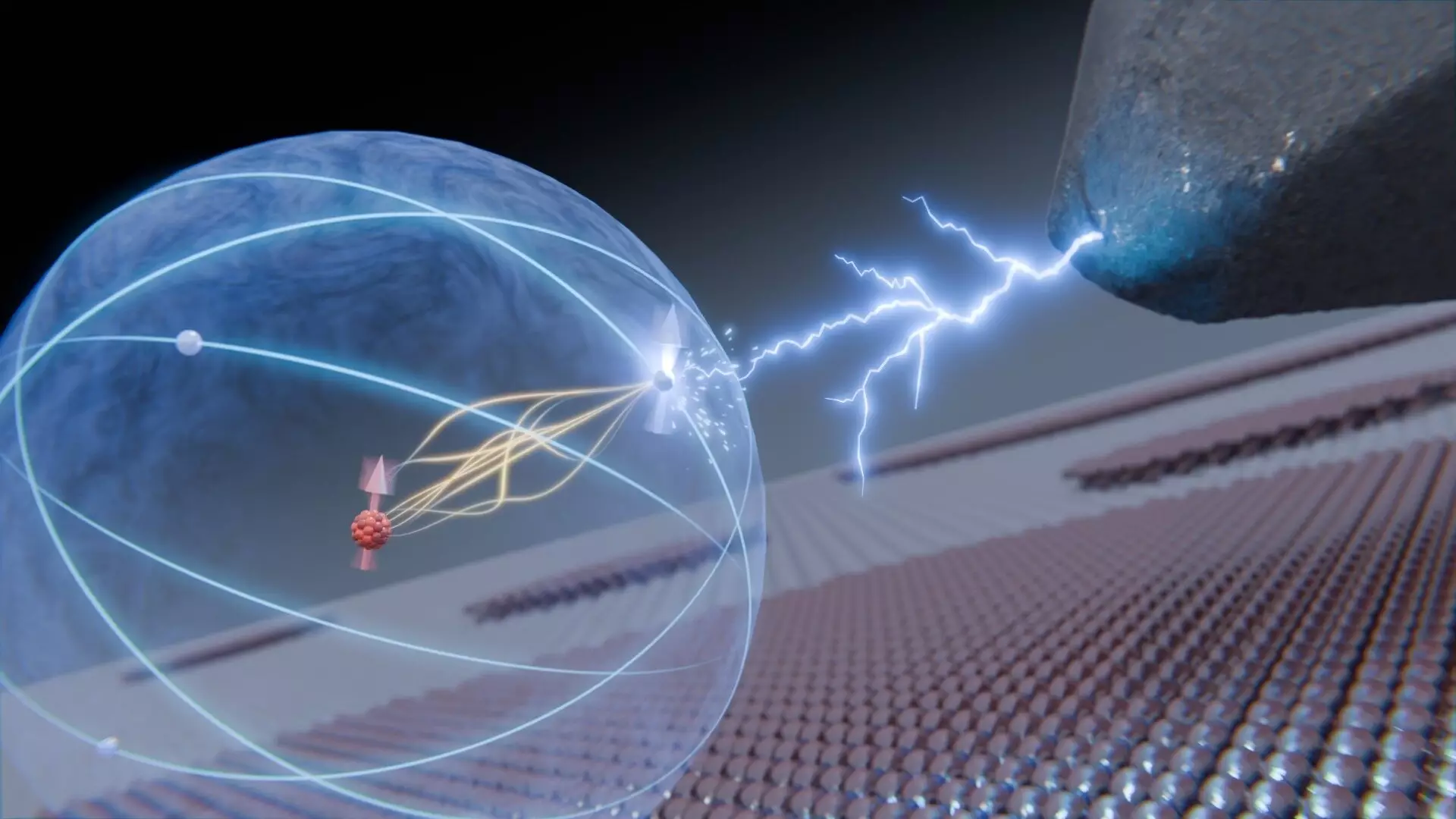At the forefront of quantum physics, researchers at Delft University of Technology in the Netherlands have successfully achieved a remarkable breakthrough by controlling movement within the atomic nucleus. By orchestrating interactions between an atomic nucleus and its outermost electron, the team has opened new avenues in quantum information storage. Their findings, documented in the esteemed journal Nature Communications, provide insight into how quantum information can be securely stored within the nucleus, shielded from external disturbances.
The focus of this study was a single titanium atom—specifically, the isotope Ti-47. This particular atom is noteworthy due to its lack of one neutron compared to the more common Ti-48, resulting in a magnetic nucleus. This inherent magnetism, often referred to as “spin” in the realms of quantum mechanics, behaves like a tiny compass that can orient itself in various directions, thereby encoding information. The study’s lead researcher, Sander Otte, emphasizes the importance of their work in manipulating this atomic spin, which can potentially serve as a robust medium for holding quantum data.
Central to the successful manipulation of the nucleus is the concept of hyperfine interactions. This phenomenon describes the minute interaction between nuclear spin and the spin of orbiting electrons. As researcher Lukas Veldman elaborates, these interactions are notoriously weak; thus, they require a finely-tuned magnetic environment for effective manipulation. The research team meticulously crafted the experimental setup, considering every detail necessary to meet the conditions for observing this phenomenon.
The experimental process involved applying a voltage pulse to disrupt the equilibrium of the electron spin, leading to a brief, yet intricate, wobble of both the electron and nuclear spins. This behavior aligns well with the principles posited by renowned physicist Erwin Schrödinger, highlighting the theoretical underpinnings of their observations. Veldman’s calculations corroborated the experiment’s results, providing compelling evidence that quantum information remained intact during these interactions. The ability to demonstrate that no information loss occurs is crucial, reinforcing the potential applicability of nuclear spins in quantum computing.
While the primary ambition of the researchers may not lie solely in practical applications, their work paves the way for groundbreaking advancements in quantum technology. Otte articulates a broader vision, stating that their experiment grants scientists unprecedented control over matter at an infinitesimally small scale. This manipulation could lead to significant enhancements in quantum computing, where maintaining quantum states without interference is vital for system performance and reliability.
This pioneering work not only expands the boundaries of atomic physics but also offers significant potential for practical applications in hyper-advanced technology seeking to leverage the unique properties of quantum mechanics. As researchers continue to delve into this remarkable realm, the future of quantum information storage looks promising and full of potential.


Leave a Reply